Parveen Kaswan is an officer in the Indian Forest Service, currently posted in Jaldapara National Park in West Bengal, home to one of the largest remaining populations of the Indian rhino (also called the greater one-horned rhino).
Born in Mirjawali village, in the Hanumangarh district of Rajasthan, his journey to this position was circuitous. He pursued a BTech in Aerospace, Aeronautical, and Astronautical/Space Engineering from Amity University, followed by an MDes from IISc in 2012. After IISc, he nurtured a desire to work in the civil services. He passed the UPSC exam for IFS as a 2016 batch officer, as part of the West Bengal cadre, and then completed a two-year Master’s in Forestry at the Forest Research Institute, Dehradun. He has traversed diverse terrains, patrolling deep into the forests of West Bengal, walking along rivers, restoring grasslands, tracking animals and poachers. Years of observing animals in the wild led him and collaborators to discover an interesting elephant behaviour – the burial of their dead. Beyond his responsibilities, his informative and picturesque posts on social media about India’s wilderness have gained him a loyal and growing fan following.
After returning from an intensive anti-poaching camp in the field, Parveen Kaswan speaks to CONNECT from his office in Jaldapara, sharing glimpses into his life behind the job of protecting the country’s forests. The interview is edited for clarity and flow.
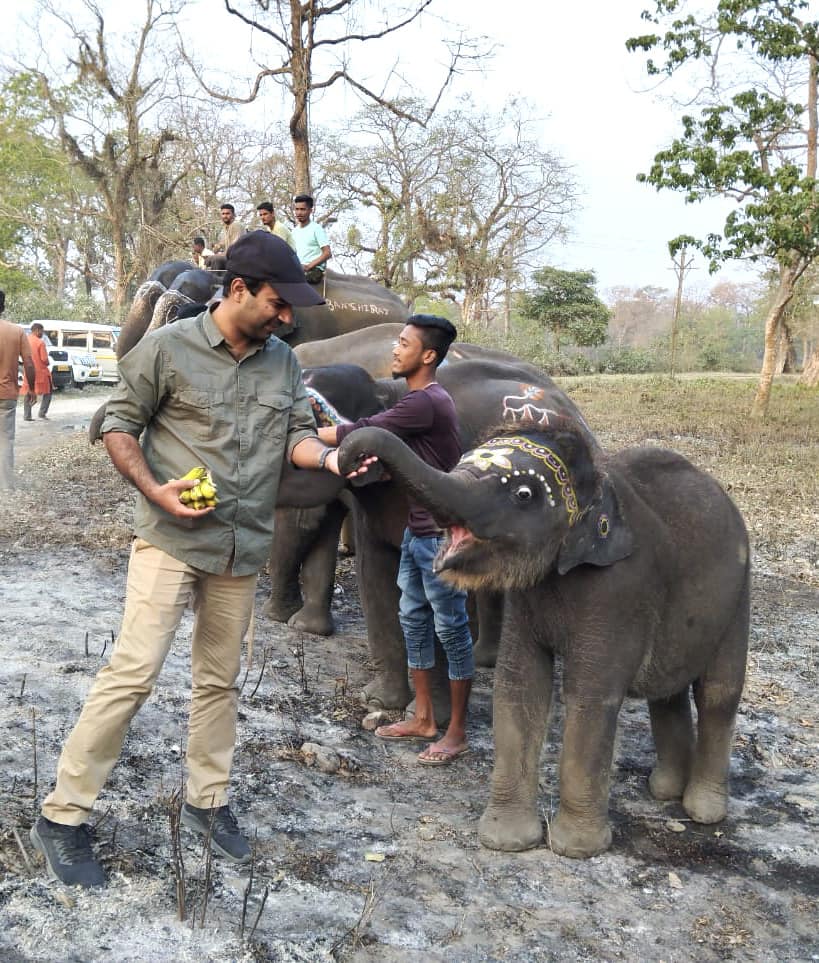
Tell us about your current posting. It is a beautiful place.
Yes, Jaldapara National Park is a rhino landscape. There are very few places where you will find rhinos in India, and Jaldapara is home to the second biggest population of the one-horned rhino, after Kaziranga National Park. Before this, I was in the Buxa Tiger Reserve for three years.
You just recently returned from an anti-poaching camp as well, right?
Working with the IFS, there are many things we need to look after. One of them is anti-poaching activities. Both Buxa and Jaldapara are near the borders of China, Bhutan, and Bangladesh, and are thereafter connected to northeast and southeast Asia. They are very vulnerable to poaching and illegal activities. There are many anti-poaching camps in both Buxa and Jaldapara which are manned 24×7. And it is my job to ensure that they are well maintained and equipped. So, I keep visiting these camps.
What kind of technology do you use at these camps?
We have basic technology like GPS trackers that we use to know which areas are being covered [patrolled] by the teams. When I was in Buxa, we used a special app called M-Stripes, which is applicable across India. It records their [range officers’] presence, movement pattern and can even record the presence of animals, for surveys and scientific purposes. In Jaldapara, we also use GPS for elephant monitoring and patrolling.
Every month, we sit with our teams, see what kind of patrolling they have done, what are the vulnerable areas covered, and so on. We also use drones for mapping or monitoring.
I read a recent news report about the infamous rhino poacher Rikoch Narjari being apprehended in Assam. This seems to be a key part of your work too?
Yes. Recently, we also had a case of pangolin smuggling. The smuggler was convicted and sentenced to five years in jail. In another case, a clouded leopard’s skin was seized from a poacher and a three-year jail term was given to him and his accomplice. And recently, in a hornbill hunting case, a three-year jail term was given to a person.
Our teams investigate [these incidents], attend the trial(s), and present our cases at the court. If everything goes well, we get convictions.
I’m curious, gathering evidence, getting convictions … are these difficult?
Yes. Convictions in India are at a very low rate, in all kinds of cases.
As a precaution, we monitor and track people who are habitual offenders, with a history of poaching or illegal activities. Right now, only if we find [suspect] something, we will seize or arrest somebody. That will not solve our problem. It will be solved when there is preventive enforcement, that is, if we can avoid poaching. There are challenges, but at the same time, there are opportunities for learning.
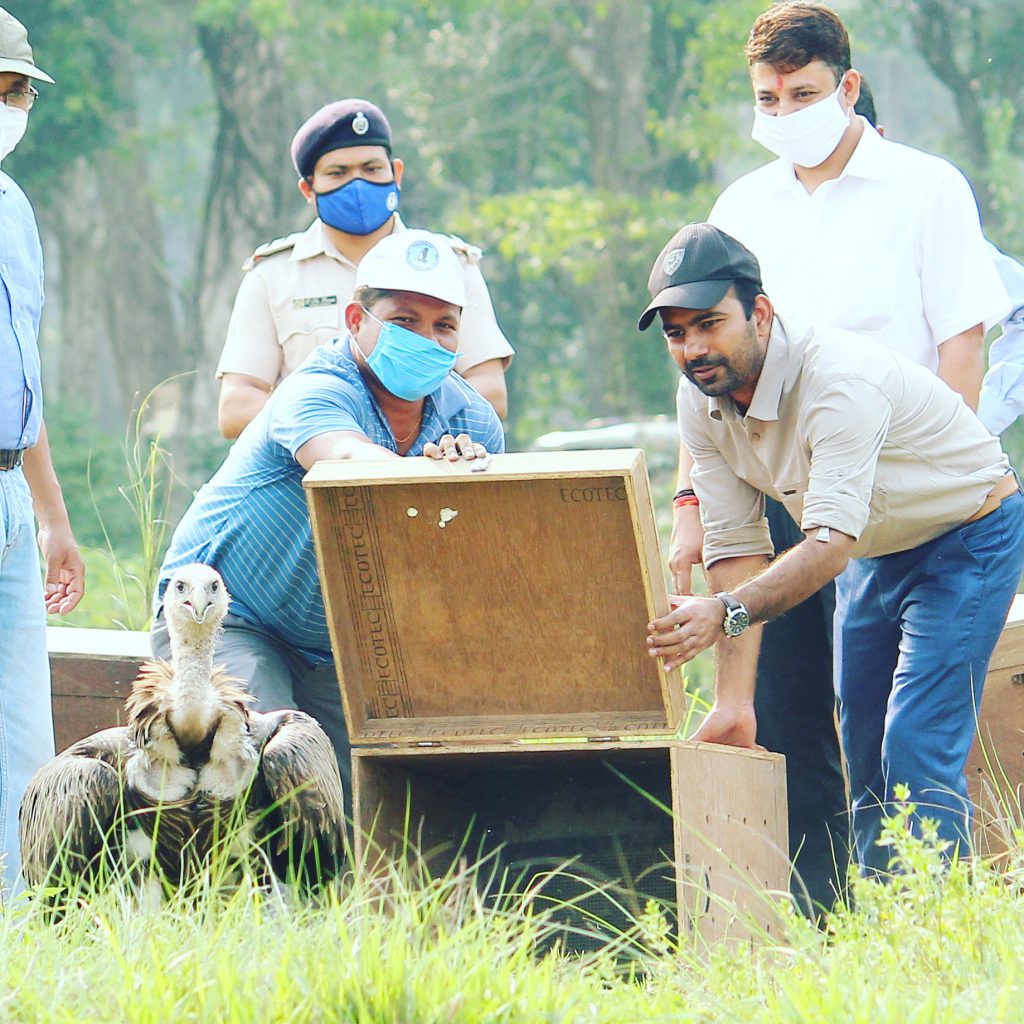
What’s an average day in your work like?
As a park manager, activities keep happening in the park that I need to keep track of. There is habitat management; we create grasslands and maintain old grasslands so that animals have enough food and do not move out. We do a lot of work to reduce human-animal conflict because animals like rhinos, bison and sambar deer will keep moving outside the forest. If any conflict happens, we figure out how to calm everybody, coordinating with other departments. The police and district administration are very helpful.
Then there is establishment work. In Jaldapara National Park, I have 15 ranges manned by officers – there are beat officers and forest guards so whom to post where … all of that. It is all about people management, getting the most out of people, and working as a team.
Then there is infrastructure management of a park, say, bridges or anti-poaching camps. I have 22 anti-poaching camps inside the forest in Jaldapara. One of the important jobs of a park manager is to manage tourism. With a huge number of vehicles, people want to see something and they need good experiences. In the end, if people don’t know what is being conserved, and why, they will not help conserve. So, tourism management is an important factor. Last year, there were one lakh plus footfalls in Jaldapara. With that much footfall in Jaldapara, you can understand what tourism brings to these nearby places. From safari owners to hotels and homestays to guides, it provides opportunities for a lot of people on the fringes of the national park to generate livelihood.
‘An important job of a park manager is to manage tourism … if people don’t know what is being conserved, they will not help conserve it’
I’m sure there are plenty of rewarding moments. Were you posted in Buxa when a tiger was spotted there in 2021, after almost two decades?
Yes (smiles). We documented it in December 2021. I was there. That must have been a huge event! Exactly. Buxa once had a lot of tigers. I don’t know the exact reason, there may be many, but the tigers left [two decades ago]. So in 2021, it was a “Eureka” moment when we documented one tiger and then another one in December 2023. Now I hope the tigers will move back. The prey base and protection are improving.
How is the tiger population in Jaldapara?
We do have some movement of tigers, but Jaldapara National Park focuses mainly on the Indian one-horned rhino. Now we have more than 300 rhinos in Jaldapara. There are also leopards, bison, sambar, hog deer, spotted deer, and other animals.
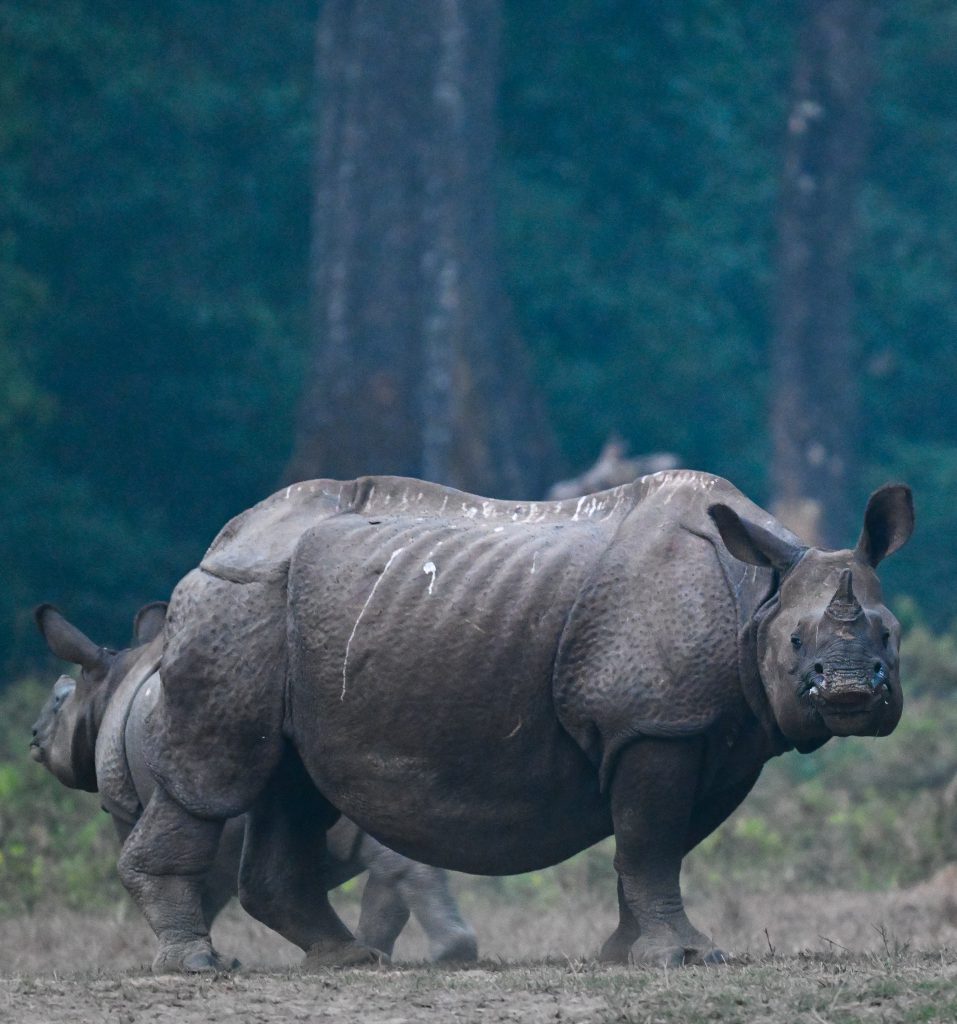
Going back in time, you studied astrophysics and design. How do the learnings from these fields shape your current work?
It made me [more] analytical. I can give hours to a job, I don’t get bored. I love to work. So this is, I think, the change that these fields have brought for me.
How do you remember your days at IISc? What are your favourite memories from your time here?
I had a very good experience at IISc. I made really good friends and it is a very beautiful campus. My centre [CPDM] was near Prakriti, where we had most of the meals, from breakfast to evening tea.
I think IISc will always remain in my heart. It improved my personality. I come from a very small village, in the Mandya district of Rajasthan. Nobody ever went to other places in my family; they are still farmers. So, I had very little exposure. Nobody was there to guide me. I prepared for GATE and then I went to IISc. In my department, every Thursday, there would be a presentation, and this improved my way of talking and presenting. And communication is an important skill that needs to be acquired. Since I was not able to acquire it from my parents or my small school, IISc helped a lot in that.
‘IISc will always remain in my heart. It improved my personality’
That’s wonderful. Coming back to the present, I wanted to ask you about your recent paper. People have known that elephants are social animals but the finding you published – that they grieve and bury their dead – is intriguing. What set you off to look into this?
I have been working in the forest for a few years now, and I have always been curious about elephants. I read about them in old journals and books, and kept monitoring their movement when I was in Midnapore, in Bankura district (West Bengal), which sees seasonal migration of elephants from Jharkhand, Odisha, and other places. So, I kept tracking those elephant groups, how they behave, celebrate, and mourn. I have written some 100 pages of notes about their movement and behaviour, just for my understanding. I always thought that if they are known to celebrate birth, they would mourn also.
When I came to Buxa, around 2022, I observed an interesting case in a tea garden, where an elephant calf was buried. And it looked like it was [done] by an elephant herd; we observed many elephant footprints in the mud, from small to big. Maybe, we can assume, it [the dead calf] fell into that ditch by accident and then the community [the herd], all of them participated in the burial.
But then, when I started observing, I realised that there were more such cases; we came up with five. It was a trend; it cannot be an accident. So in this paper, we have studied peri-mortem strategy, post-mortem behaviour, and marks on their bodies. We are presenting five such cases in which we realise that there is a community burial every year in Buxa.
Our paper is not final, it is very open-ended. Maybe after three or four years, I will document a few more such cases.

Many people look at wildlife as something “separate” from humans. Do you think such studies help change such thinking?
We are not humanising elephants. What we are saying is that every species has its own specific needs, cultures or behaviours. And this is how elephants behave; they mourn and do community burials. They also create a milestone. This is a sign of a highly intelligent animal.
In the five cases we observed in our paper, we realised that they [the herd] are not coming back to that [burial site]. They have reduced their migration to that part. There can be many reasons. One may be because they have already buried it. Or else, maybe they know that the bodies have already been removed by humans. That is also possible.
In many cases, in Africa or other places, there is documentation where elephants came back to see [the burial site] at different stages of disposal of a body. In all cases, they were not buried by the elephant families. There are also papers on African elephants where it has been observed that they [elephants] put leaves on it [the grave] or then put sand over it. Maybe because they are not finding proper places, like ditches. Because elephants can’t dig holes. Maybe it is opportunistic.
‘We are not humanising elephants … every species has its own specific needs, cultures or behaviours’
Do you think the impetus for wildlife conservation in India is short-lived? For instance, the incident in Kerala with an elephant and firecracker became a huge issue, and many were invested, but public interest died out soon. How can we retain this involvement consistently?
One of the ways, I found, is to involve a lot of people in the decision-making process for conservation. These days, thanks to technology like camera traps, GPS, and so on, we know what kind of animals are around and what spaces they are occupying. It is important how we present these findings to people, it should be in a manner in which a normal person is able to consume.
As they often say, catch them young … Maybe in schools and colleges, these kinds of steps should be taken.
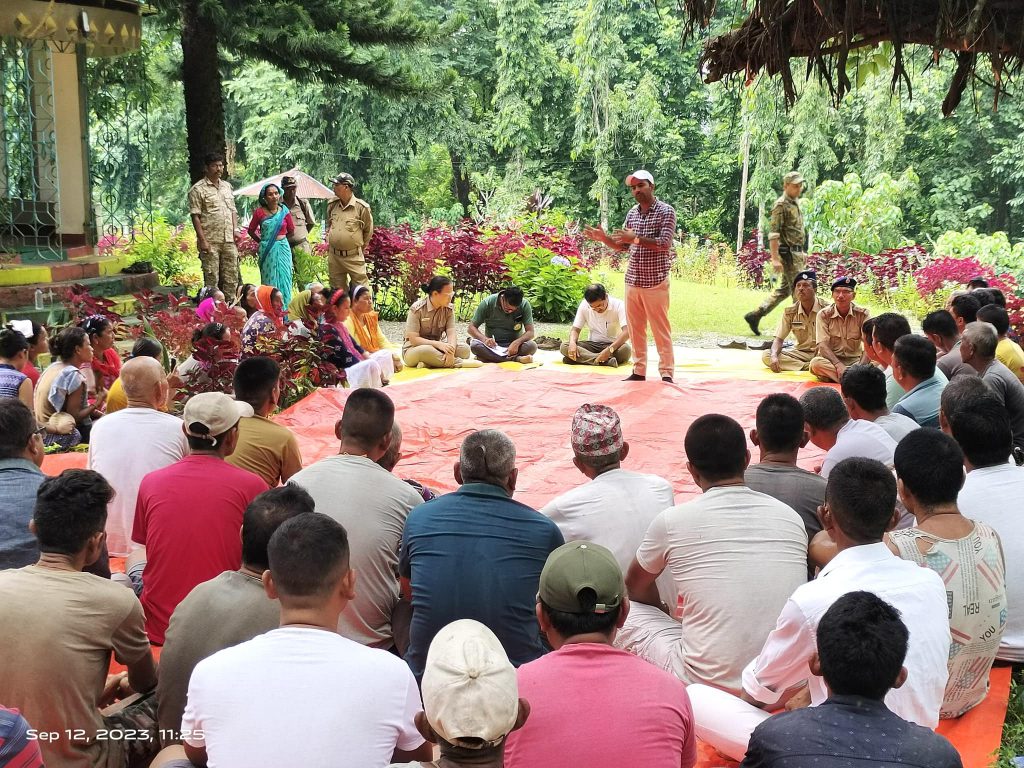
Of late there seems to be more interest in creating films and TV series about wildlife conservation, like Poacher and Sherni.
I started watching Poachers. People like us will connect with such a series, but I want [more] people to connect with it. With more such series, I hope the message will spread wider.
I mean, I am at a sufficiently high rank, so I am visible to people. I want my frontline staff to be visible – what they are doing, how they are doing it, what difficulties they face, how the terrains are. It is a thankless job. Only if people know what we are doing will they appreciate it. There should be more outreach.
I feel like Poacher did a nuanced job of showing the challenges that frontline staff face, including threats to life. How do you navigate such things?
I believe in teamwork. Wherever I go, I connect with my field staff. If I can help them personally or in any way, I try to. I try to motivate them. Because unless you go to the field, they will not feel connected. Motivation is the key.
You also post a lot of beautiful pictures on social media.
I rarely post about any other thing except forest and wildlife. Since I have this opportunity to have a good following, I keep sharing information about wildlife or the natural world with people. A lot of people don’t know much about what we do, how it is done, about wildlife or about their habitat, or their protection status. So there is curiosity.
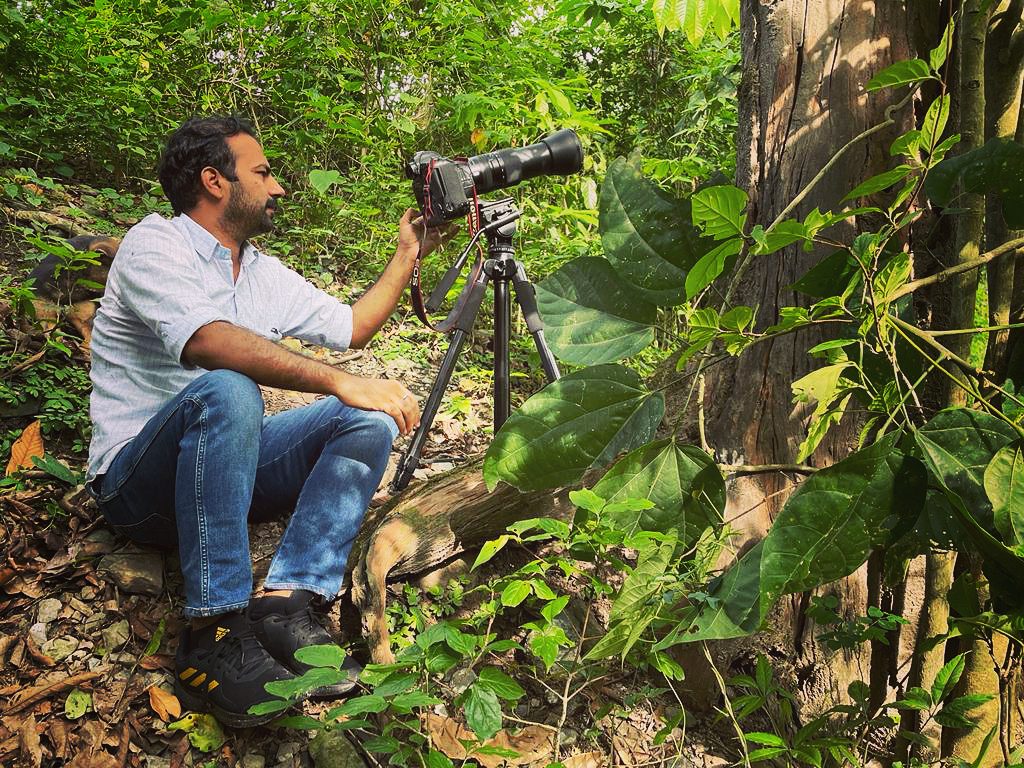
Any memorable experiences you cherish?
Yes, the beautiful thing about this field is, every day is a new experience. A beautiful moment that I remember is when we documented that tiger in Buxa after almost 23 years. Another is that for many years, we tried to relocate one village from the core of Buxa Tiger Reserve, and we were able to. It took us two and a half years, from funding to dismantling to moving out. 191 families were relocated from the forest and shifted outside.
Your work seems to involve a lot of travelling and walking. Is that hard?
Actually, it keeps me healthy (laughs). Sometimes we walk 10-12 km. in a day. I love to go to the field, to eat at camp, and stay in my camp offices. It is not stressful for me. I enjoy it.




